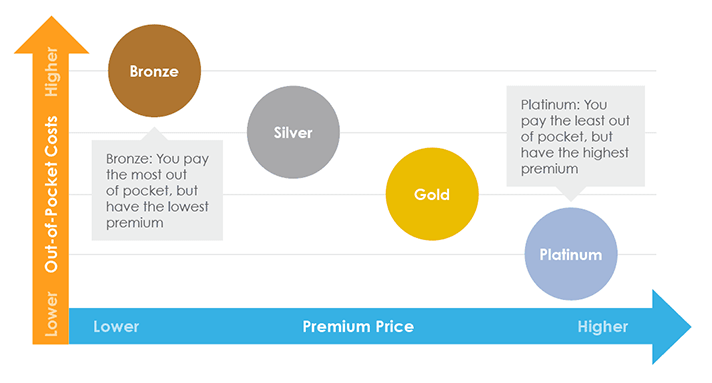
Discover Premier Marketplace Health Insurance Options from Florida's Most Trusted Carriers

35 Million People Are Covered By ACA Plans - Here's Why
Thanks to the ACA, nearly 35 million individuals have gained access to health insurance coverage, marking a significant milestone in expanding healthcare access across the United States. This law has played a crucial role in reducing the number of uninsured Americans, providing them with the security and peace of mind that comes with having comprehensive healthcare coverage.
Pre-Existing Conditions Covered
The ACA ensures that insurance companies cannot deny coverage or charge higher premiums based on pre-existing conditions, making healthcare more accessible for all Americans.
10 Essential Benefits Must Be Covered
ACA-compliant insurance plans cover essential benefits like outpatient care, emergency services, hospitalization, maternity and newborn care, mental health and substance abuse treatment, prescription drugs, rehabilitative services, laboratory tests, preventive care, and pediatric services (including dental and vision care).
Premium Tax Credits (Subsidies)
The ACA provides premium tax credits to help lower-income families afford health insurance. In some cases, these credits can fully cover the cost of a Bronze plan, ensuring that lower-income individuals and families have access to affordable healthcare options.
No Annual Or Lifetime Maximum Coverage Limits
ACA plans provide the assurance that there are no lifetime or annual maximum coverage limits, ensuring that individuals can continue to receive necessary healthcare without worrying about their insurance coverage running out. This critical feature offers peace of mind and financial security for those with extensive medical needs.
Preventative Covered At 100%
Under the ACA, preventive services must be covered at no cost to the patient on ACA plans. These include vaccinations, screenings, and preventive health measures to promote well-being and early disease detection.
Cost-Sharing (Subsidies)
The ACA also offers cost-sharing benefits for eligible individuals and families. These benefits reduce out-of-pocket expenses like copayments, deductibles, and coinsurance, making healthcare services more affordable for those with lower incomes. Cost-sharing reductions help ensure that even individuals and families who may not qualify for Medicaid can access necessary medical care without excessive financial burden.
Frequently Asked Questions
Who qualifies for financial help?
Financial help in the form of premium tax credits and cost-sharing reductions is available to individuals and families who meet certain income and household size requirements under the ACA. Generally, you may qualify for financial assistance on an ACA plan if your income falls within a certain range, typically between 100% and 400% of the federal poverty level (FPL) for premium tax credits, and below 250% of the FPL for cost-sharing reductions.
Specifically, eligibility for financial help is determined based on your annual income and the number of individuals in your household. The ACA considers various factors, including your taxable income, to determine whether you qualify for assistance. It’s important to note that Medicaid expansion in some states provides additional financial support for individuals with even lower incomes.
WHAT AND WHEN IS OPEN ENROLLMENT?
Open enrollment for the ACA typically occurs annually and allows individuals to enroll in or make changes to their health insurance plans. The exact dates may vary from year to year, but it commonly runs from November 1st to December 15th. It’s crucial to check the specific dates for each year and ensure you enroll or make changes to your plan during this window to obtain or modify your ACA coverage.
WHAT IS A SPECIAL ENROLLMENT PERIOD?
A Special Enrollment Period (SEP) in the ACA is a specific time outside the regular open enrollment period when individuals can enroll in or make changes to their health insurance plans. SEPs are triggered by certain life events (Qualifying Life Events / QLE), such as getting married, having a baby, losing other coverage, or moving to a new area. These events allow you to access ACA coverage outside the typical enrollment period, ensuring that you have options to address changes in your healthcare needs.
WHAT QUALIFYING LIFE EVENTS TRIGGER AN SEP?
Qualifying life events that trigger a Special Enrollment Period (SEP) in the ACA include:
- Getting married or entering into a domestic partnership.
- Having a baby, adopting a child, or placing a child for adoption or foster care.
- Losing other healthcare coverage due to factors like job loss, aging out of a parent’s plan, or the expiration of COBRA coverage.
- Moving to a new location that offers different health insurance options.
- Gaining citizenship or lawful presence in the United States.
- Becoming eligible for Medicaid or the Children’s Health Insurance Program (CHIP).
- Experiencing a change in income that affects your eligibility for premium tax credits or cost-sharing reductions.
- Experiencing other exceptional circumstances that may warrant an SEP, such as becoming a victim of domestic abuse or spousal abandonment.
These life events allow individuals and families to enroll in or make changes to their ACA health insurance plans outside the regular open enrollment period, ensuring access to coverage when it’s needed most.
Metallic Levels Explained
The ACA offers health insurance plans with different coverage levels, represented by “metallic levels”: Bronze, Silver, Gold, and Platinum. Each level corresponds to how much of your healthcare costs the plan will cover on average:
Bronze Plans: These plans cover around 60% of your healthcare costs on average. You’ll pay lower monthly premiums but more out-of-pocket when you get care.
Silver Plans: Silver plans cover about 70% of your healthcare costs on average. They balance monthly premiums and out-of-pocket costs.
Gold Plans: These plans cover roughly 80% of your healthcare costs on average. They have higher monthly premiums but lower out-of-pocket expenses.
Platinum Plans: Platinum plans are the most comprehensive, covering around 90% of your healthcare costs on average. They have the highest monthly premiums but the lowest out-of-pocket expenses.
When choosing a plan, consider your health needs, budget, and how often you expect to use healthcare services. This way, you can find a plan that suits your needs and finances.

Why Work With Us
Free to you
Our services come at no cost to you, our valued customers. We are compensated directly by the insurance carrier, allowing us to provide you with expert guidance and assistance without any fees on your part. Your satisfaction and peace of mind are our top priorities.
Unbiased Expert Advice
With more than two decades of industry experience, our team ensures you find the ideal insurance plan, uniquely tailored to your requirements. What sets us apart is that we work for you, not the insurance carrier, ensuring unbiased advice. We navigate the intricacies of insurance with our expertise, guaranteeing you the peace of mind that comes with knowing you're covered exactly as you need to be. Your satisfaction remains our unwavering commitment.
Continued Support
We make each year hassle-free by maintaining an ongoing relationship with you. We stay in touch, proactively review any life changes that might affect your insurance needs, and carefully place you in the most cost-effective and appropriate coverage options. Our commitment is to ensure your peace of mind, year after year.